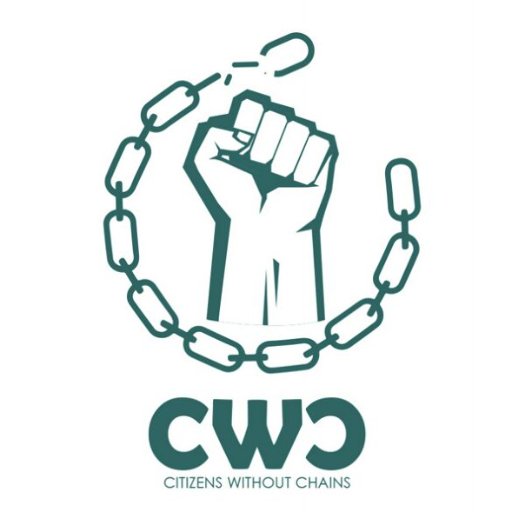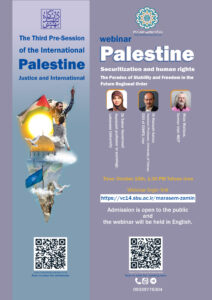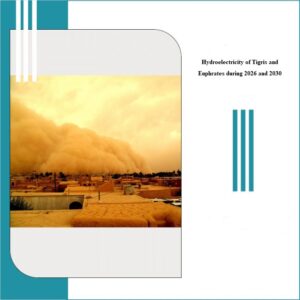“The political-social atmosphere of Saudi Arabia”… The September 15th Movement or Legal Movement of the Unrestrained Citizens?
Bahman Shamsi
Research fellow at IIWFS
Introduction:
Saudi Arabia is a country with a closed political-social context in which its civil society is fully aware of the perils of social activities in the country and therefore acts very cautiously in its demands lest it be accused of making trouble, violating the law, opposing religion, terrorism, brotherhood and opposition to the government, and consequently being caught in torture, executions, and strict measures of government in the country; A government that has proven to be less flexible than criticism and opposition, and has always responded to such an opposition to iron and fire (sword and bullet) and will continue to do so. In recent years, the elite of the Saudi community has been organizing and creating movements in an effort to escape the current repressive situation and achieve social and civil rights, which of course, they have so far failed to achieve their goals and have actually been suppressed due to the adoption of inappropriate tactics. In this note, we are going to look at a comparison between the two most recent movements in Saudi Arabia, their goals, tactics and how they start and continue their activities, the level of coherence of each of the two movements and their probability of success in the context of the ruling kingdom in Saudi Arabia; these two movements are: 1. September 15th Movement 2. Legal Movement of Saudi Citizens Living Abroad (The Unrestrained Citizens).
۱. September 15th movement:
This movement, which began limited to short messages on Twitter and social networks, began its inauguration campaign to form a peaceful demonstration in protest of the undesirable political-social conditions in Saudi Arabia to gradually and with the advent of a snowball process, to achieve the strength and ability to pursue and advance its goals. The goals presented by the movement include the following six cases:
– Solving the crisis of unemployment, poverty and housing
– Identifying and Solving problems related to crimes and drugs
– Solving the problem of the collapse of families and oppression of women and poor groups
– Improving the level of services, especially in the field of health and education
– The release of detainees and political prisoners
– Ending the financial and administrative corruption
This movement, whose leaders are not known for security reasons, has called on Saudi citizens to take courageous action away from disclosure. This in some way expresses the skepticism of the leaders of the movement about the probability of its success in the short term and the acceleration of the power and consistency of the movement. One can say that this weakness on the one hand, comes from the strict handling of the Saudi authorities by any protest movement and, on the other hand, caused by the unreliability of the leaders of the movement for the companionship of the traditional citizens of Saudi Arabia with the goals of the movement and the process of advancing them, which are well aware of the risks and costs of confronting the Saudi rulers even peacefully. It seems that the founders of this movement, by modeling the revolutions in Egypt and Tunisia, seek to achieve another revolution, not to overthrow the government, but to achieve a satisfactory level of social and political reform for Saudi citizens. But it should be acknowledged that neither the tolerance of government in Saudi Arabia is comparable to Egypt and Tunisia, nor Saudi citizens or traditional society like the community of these two countries (Egypt and Tunisia) have a culture of enjoying social networks widely. One of the main reasons for the suppression of movements in Saudi Arabia and their failure to persevere in pursuing their goals was the lack of a complex communication network between Saudi leaders and members of the movement that have been easily identified, arrested and punished by the intelligence forces of the country.
However, as expected, the September 15th movement, due to lack of tactics and clear leadership, uncertainty accompanying traditional Arabian society with the movement’s anticipated trends, fear of the harsh and rigorous encroachments of the Saudi rulers, the contagion the tangible skepticism of its founders to Saudi citizens, and so on, failed to lead the Saudi rulers to confront an erosional conflict with the citizens, and eventually force them to carry out the reforms that were considered by the movement.
۲. Legal Movement of Saudi Citizens Living Abroad (The Unrestrained Citizens):
The unrestrained citizens’ movement announced in Dublin City, Ireland, following a new wave of arrest of famous figures and clerics by the Saudi government on September 29, 2017. The Saudi adversaries held a conference in Dublin, aimed at shaping a political framework for announcing and pursuing their desired reforms in Saudi Arabia. They called on all groups and sectors of the Arab community to participate in the activities of this non-ideological movement that opposes violence and reliant on peaceful means. The goal of unrestrained citizens’ movement is to defend freedom of thought in the Kingdom of Saudi Arabia, which is trying to enforce it by exerting pressure on Saudi authorities and international legal channels. The coordinator of the movement is Abdul-Aziz Moayed, who believes that this movement, among all the debates on the Saudi space, is a means of achieving freedom of thought that gives Saudi citizens the right to contemplate what is happening in the Saudi community and ask authorities to respond to ambiguities.
Following the arrest and detention of some influential people, such as Sheikh salman al-awdah, Master Essam Al-Zamil, and Hassan Farhan Al-Maliki, leaders of this legal movement, stating that one of their goals is the legal protection of all political prisoners and detainees in Saudi Arabia, have argued that they will soon organize massive moves on social networks to stop the arrest of well-known and influential people at the national level to achieve a reasonable and appropriate ceiling of freedom of thought in Saudi Arabia.
Mazaway Al-Rashid, an academic person who expressed his hope for the positive impact of this movement, believes that the importance of this initiative will be doubled when it comes to recognizing that it will soon serve as a platform for advocates who are deprived of the opportunity to express their views in Saudi Arabia. He has also called on Saudi citizens to respond positively to the goals of the movement, and believes that, given the strong and organized efforts of the movement, transparency will spread to the problems in Saudi Arabia, with the increase of legal claims in the country.
Conclusion:
Since no movement has ever been possible in the Saudi political and social atmosphere so far, some reforms have been carried out not in pursuit of social demands and pressure from the bottom, but also on the will of the ruling powers and in the interests of the government; (As that experts analyze the liberalization of women’s driving in Saudi Arabia in the framework of structural reforms of the economy with the aim of reducing the cost of women’s employment of foreign drivers, assessing the threshold of tolerance of religious institutions for the implementation of sensitive projects such as the Red Sea Tourism Project, reducing the relative isolation of the Saudi community in the international arena and so on.) It can be inferred that in the current situation it will be a more successful movement that has the potential to be immune to the internal pressures of Saudi Arabia and lead citizens to a level of organization, coherence and awareness, without the least controversy with the sovereignty in order to force Saudi officials to make the desired reforms of the movement, along with pursuing and exerting pressure from outside and with the help of international legal institutions. It seems that the leaders of legal movement of Saudi citizens living abroad (The Unrestrained Citizens), because of the use of legal tactics instead of demonstrating and informing citizens through social networks as well as their remoteness from the sovereignty of Saudi Arabia have taken far more effective measures than Sept. 15 Movement in order to maintain their security and immunity as well as Saudi citizens’; This fact, on the one hand, provides a promising perspective for the leaders of the movement in order to achieve the goals and, on the other hand, Increases the capacity of this movement to become a new model for the emergence of similar movements in line with the political-social atmosphere of Saudi Arabia; The September 15th movement has not taken advantage of this fact due to the pattern of the Egyptian and Tunisian revolutions and the neglect of the unique atmosphere governing Saudi Arabia.
** This article is originally published in Persian and translated by A.R. Mirjomehri.
**The views expressed in this article are those of the author(s) and do not necessarily reflect the views of IIWFS.





